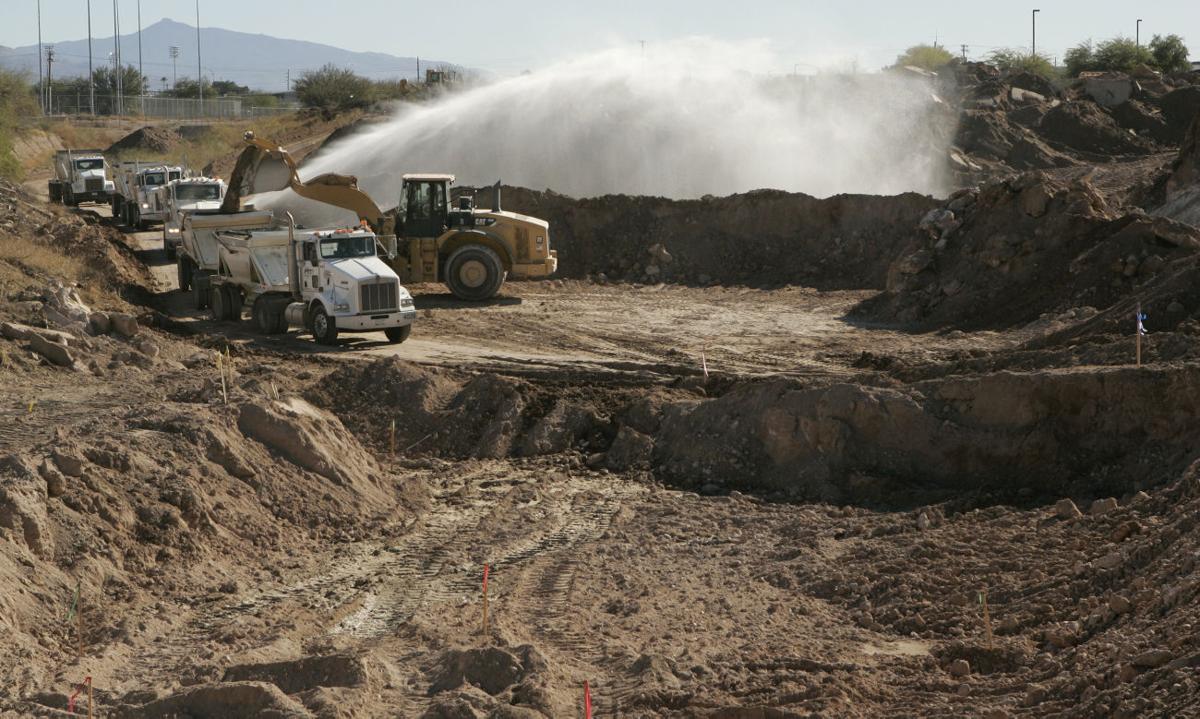After a typical oppressively hot, dry June, almost everybody is glad to see the monsoon roll in — except for people whose homes or businesses are in the path of a wall of runoff.
At times the flood damage can be catastrophic, destroying property and costing millions of dollars.
Many of the city’s older areas that have aged drainage systems experience the worst of it.
The shops along Fourth Avenue are no strangers to this.
“It just wreaks havoc with the avenue, the merchants and the neighbors in the area,” said Fred Ronstadt, president of the Fourth Avenue Merchants Association and a former Tucson city councilman.
A recently completed Pima County capital improvement project could make the nearly annual flooding on Tucson’s iconic avenue a thing of the past.
More than 20 years in the making and costing nearly $72 million, the Arroyo Chico flood-control project was completed in April.
Projects like Arroyo Chico are what make up the county’s at-times enormous capital improvement budget.
For the current budget year, the county plans to complete more than $145.8 million in construction projects. Next year, spending is slated to drop to $81.3 million.
Projects in the capital improvement budget vary widely and cover most county departments — from a few thousand dollars to demolish an old clinic to a $30 million final installment on the new county courthouse, which ultimately cost more than $140 million over several years.
Another multiyear capital project that has been ongoing is upgrades to the regional wastewater-treatment system.
The 10-year project has cost more than $600 million, funded through revenue bonds and user fees.
Funding sources also vary for capital projects, from debt-financing through bonds, government grants, impact-fee collections and general government revenue.
The Arroyo Chico project received more than $46.6 million in federal funding, while the Regional Flood Control District paid the remaining $25.3 million through the secondary property tax it levies.
The Army Corps of Engineers did much of the planning and design for the project, beginning in the late 1980s.
“It’s the largest drainage project I know of in Tucson,” said Bill Zimmerman, deputy director of Pima County Flood Control.
Arroyo Chico is a wash that runs through a series of underground culverts and above-ground channels beginning east of Randolph Golf Complex at Alvernon Way near 22nd Street.
The first section of the project is the Randolph Dell Urich Golf Course, which was redesigned as a massive retention basin for neighborhood stormwater runoff.
From there, the wash runs west and slightly north through neighborhoods and commercial areas, crossing Broadway, Euclid Avenue, Fourth Avenue and Sixth Avenue.
Wash overflow feeds a second series of retention basins near Kino Parkway and 18th Street at Cherry Field.
Along its journey into the Santa Cruz River, several other washes empty into Arroyo Chico, like an especially troublesome wash for the Fourth Avenue area called High School Wash.
The final segment of the project added new underground culverts to High School Wash, a portion of which runs under the south end of Tucson High School.
With heavy rains, the culverts, some originally constructed in the 1930s, frequently backed up with floodwaters, causing water to flow down streets and into neighborhoods.
“Fourth Avenue has been flooded numerous times over the years,” Zimmerman said.
The completed project should put an end to the routine flooding of Fourth Avenue and surrounding neighborhoods.
“Mentally, it’s nice to know the damage, or potential for damage, is gone,” Ronstadt said.
In addition, the project overall has removed more than 1,300 residential and commercial properties from the 100-year flood plain. County officials estimate the total value of those properties at more than $364 million.
Prior to the drainage project, the flood plain extended nearly half a mile across in some areas. Most of the new 100-year flood-event boundaries stay within the confines of the wash itself.
Pima County Administrator Chuck Huckelberry said as a result of the project, property owners that had been in the flood-plain areas around Arroyo Chico would no longer have to purchase flood insurance.
“It’s an example of infrastructure investment that provides benefits to real people,” he said.





